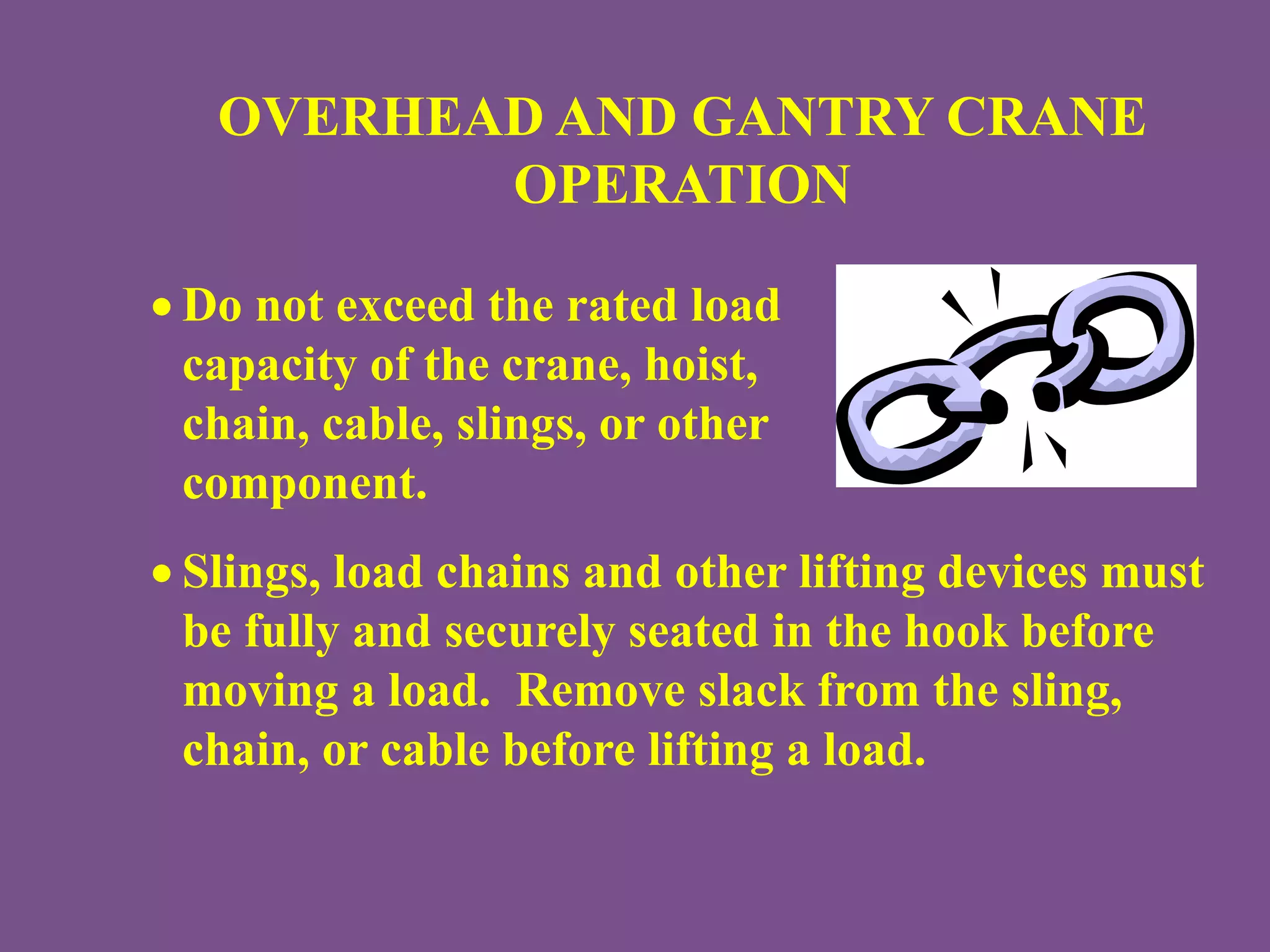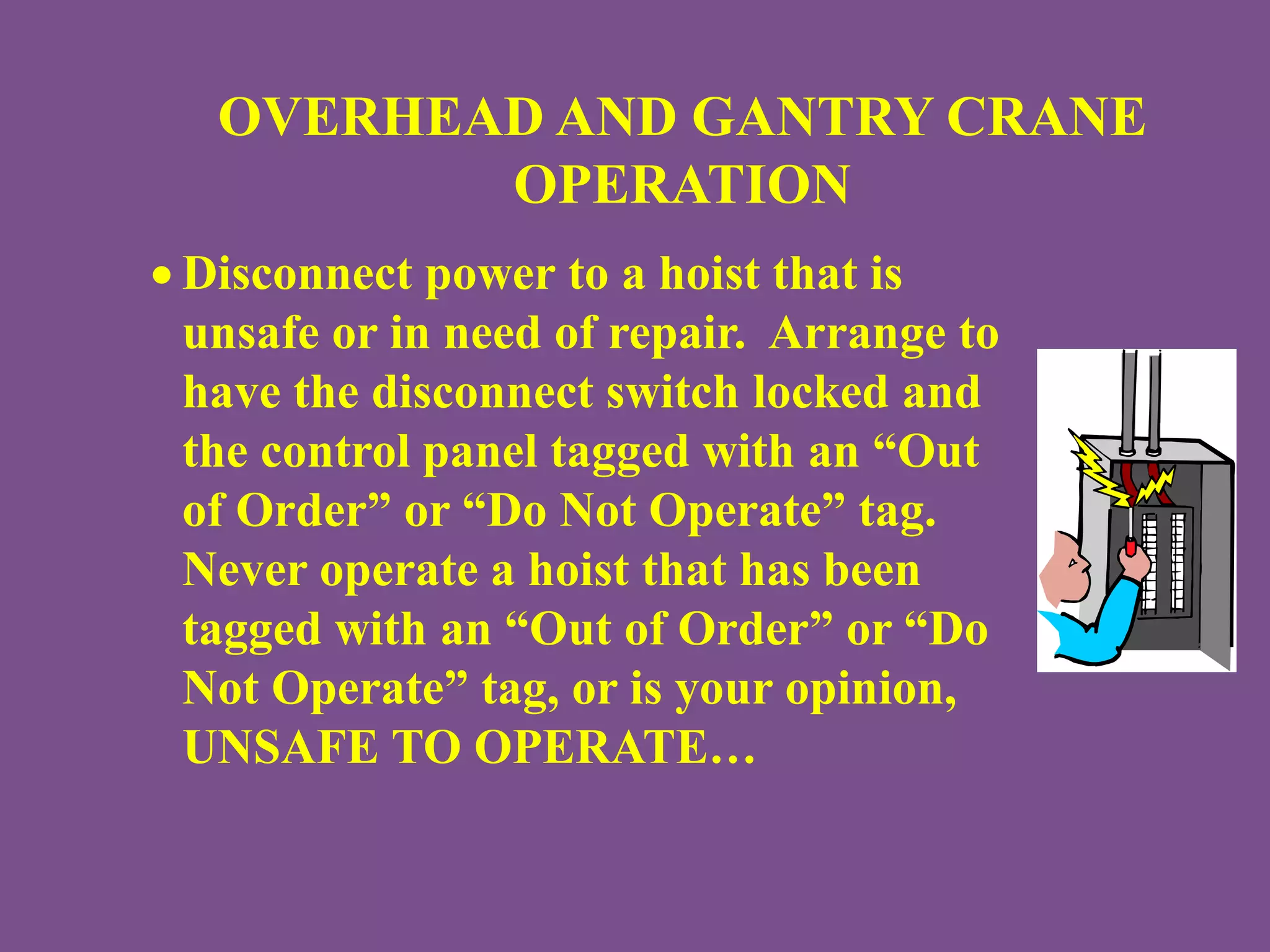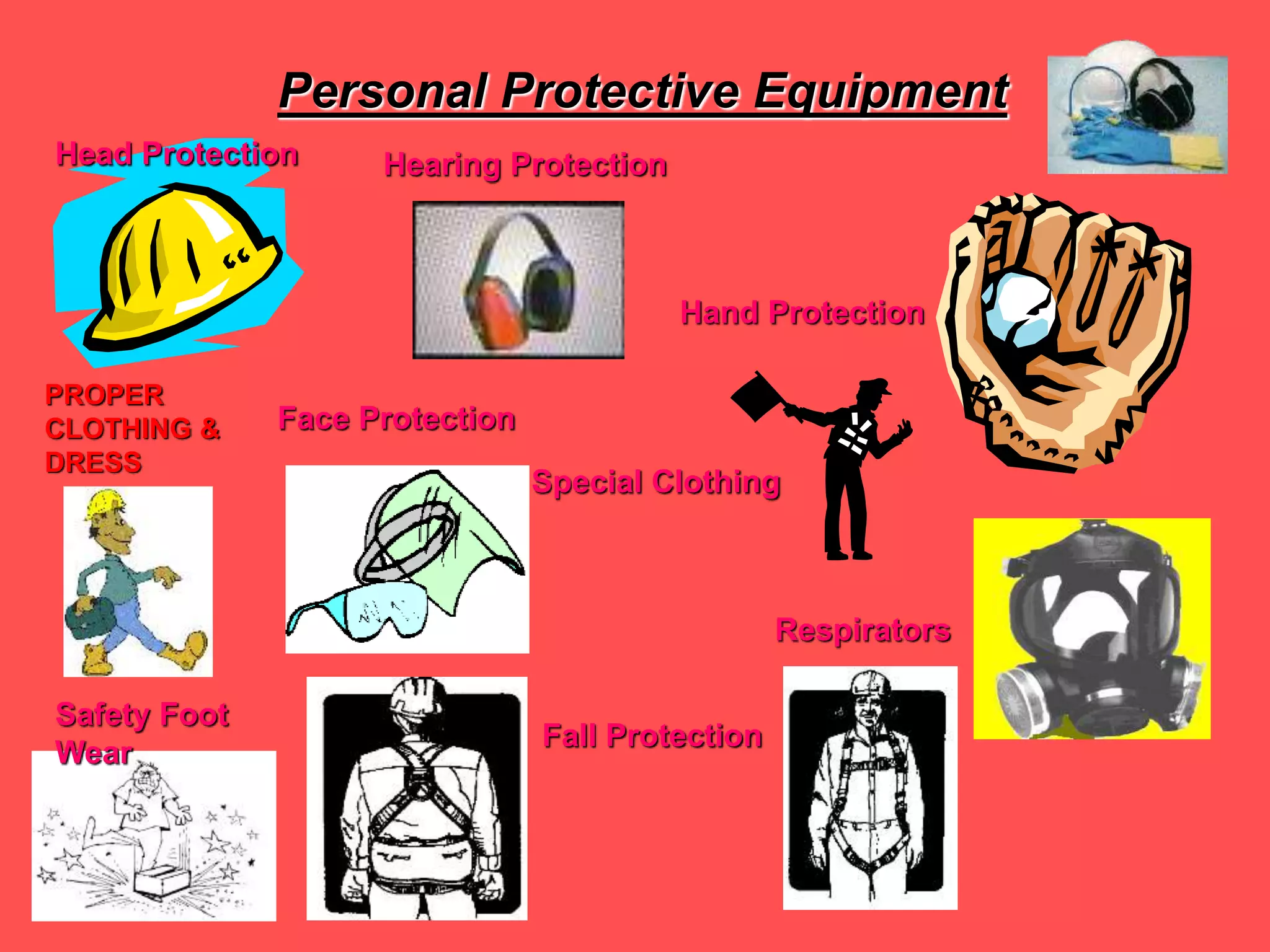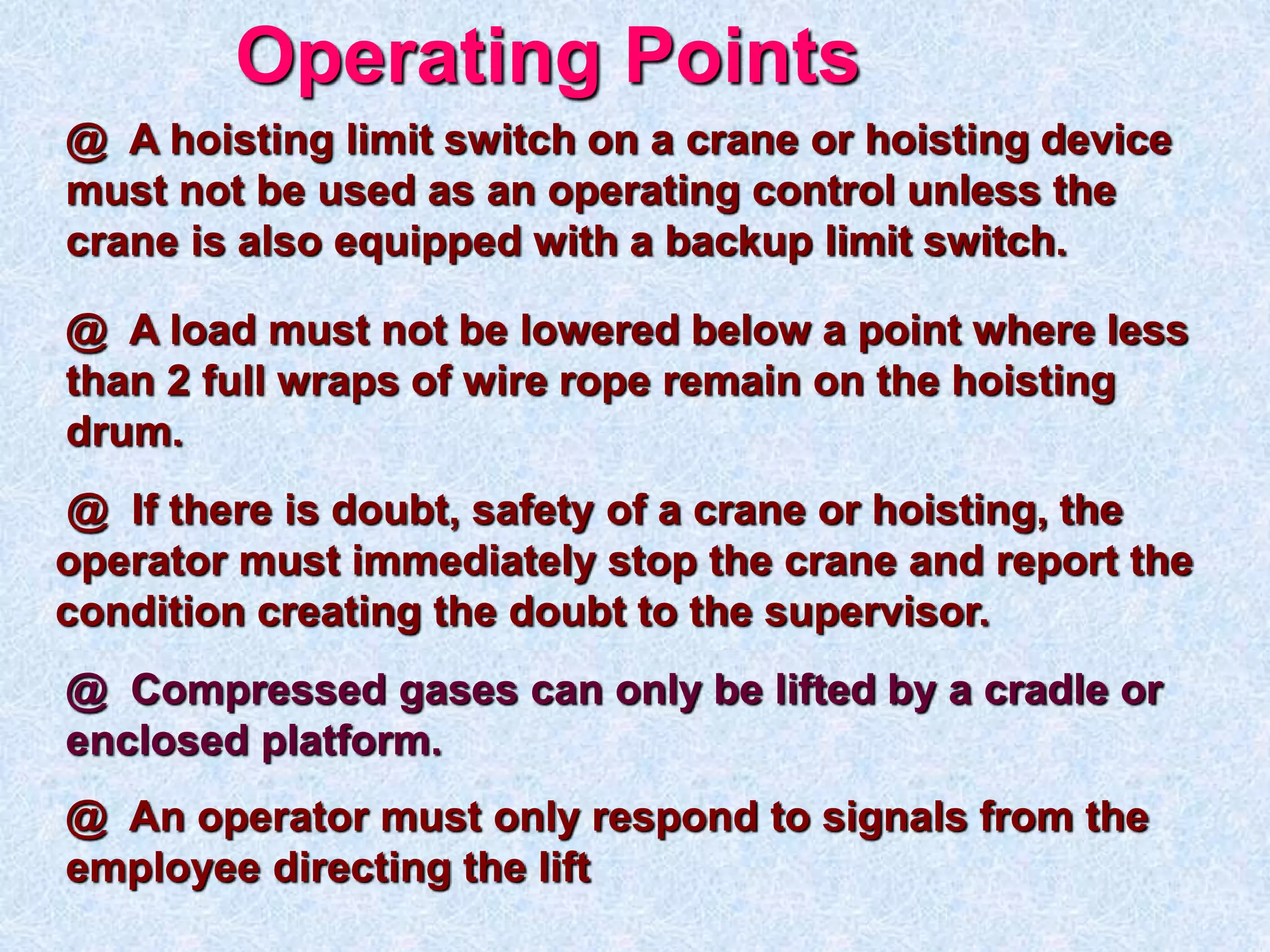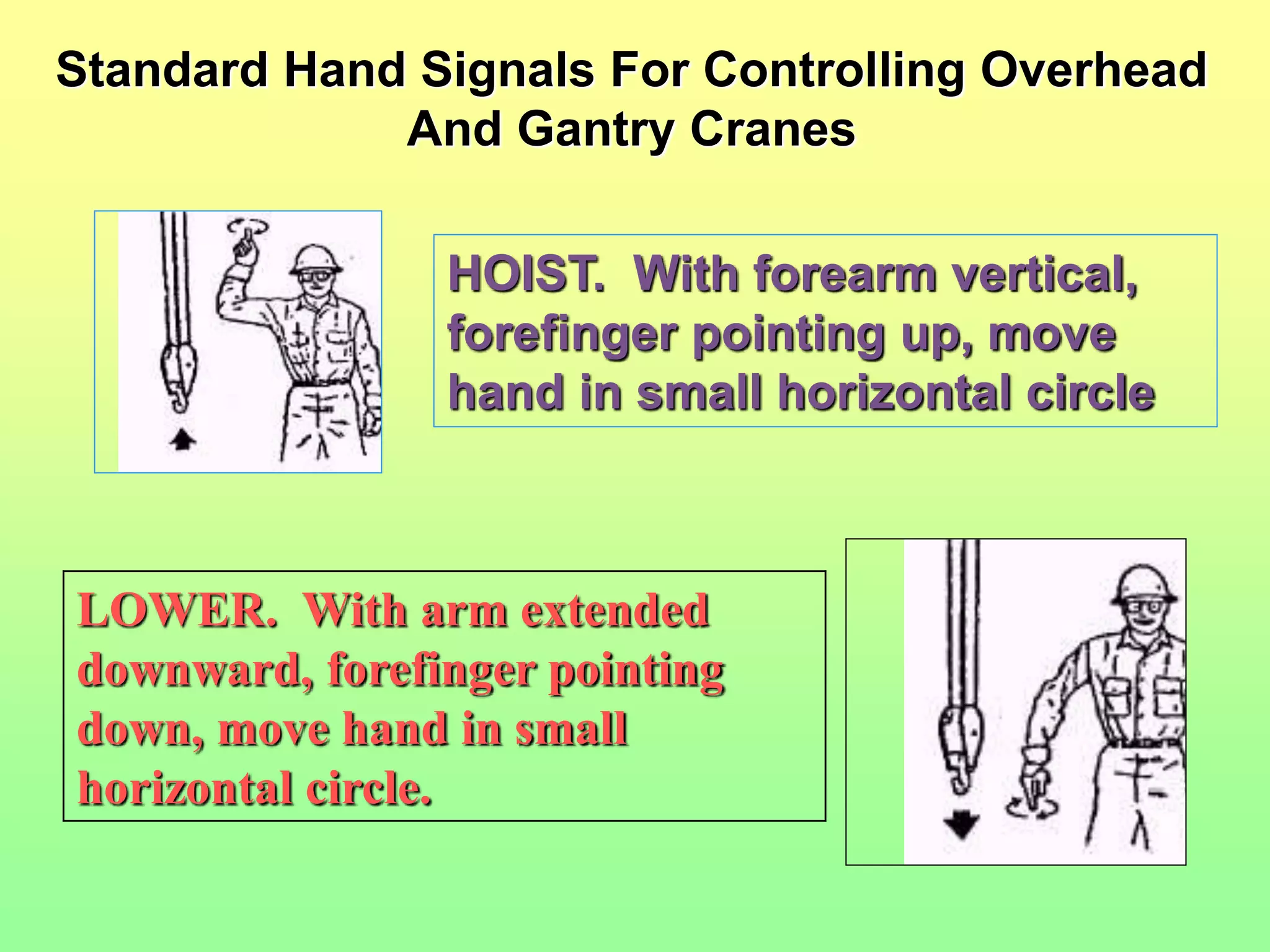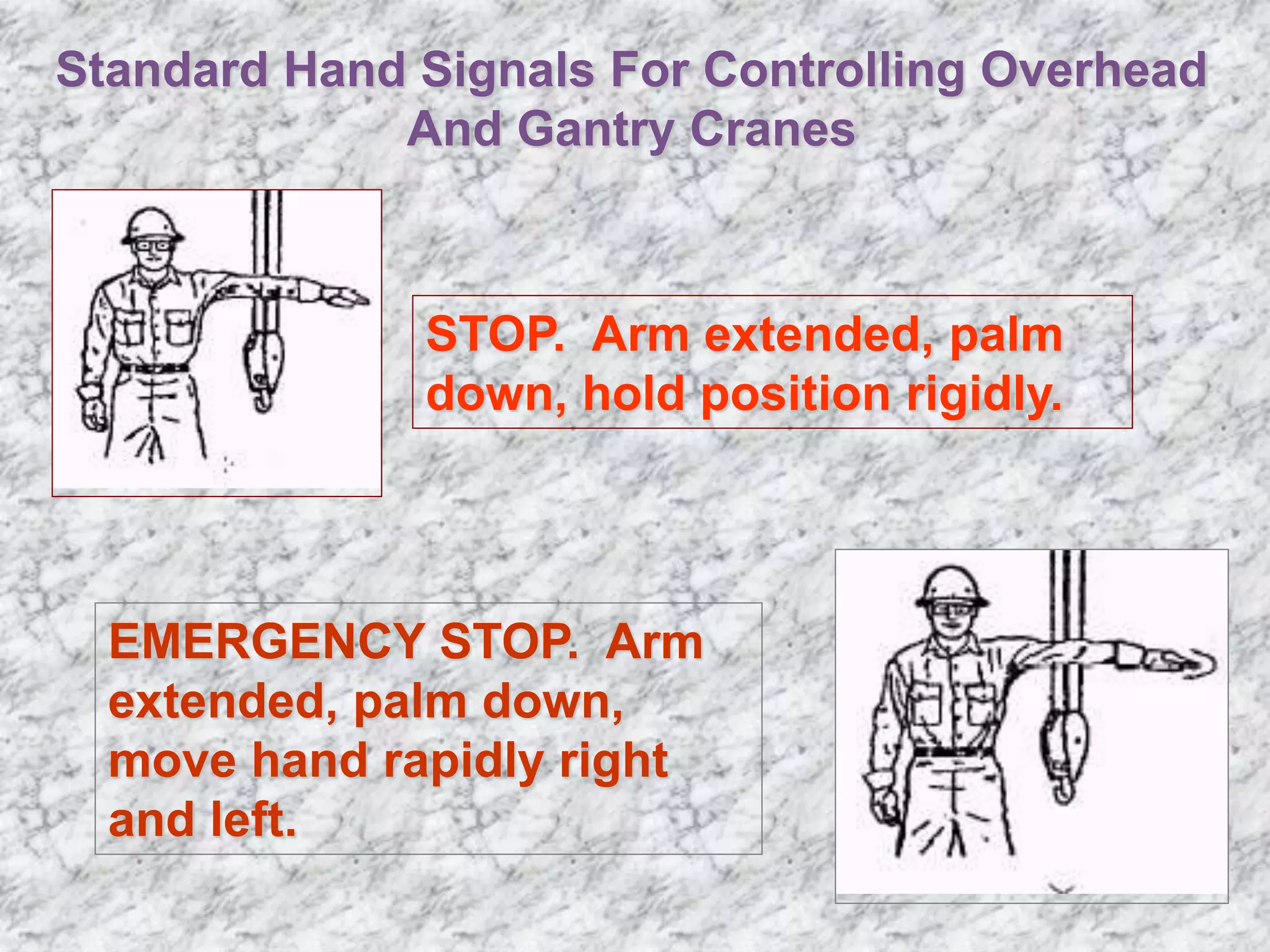This document provides information on overhead crane operation and safety. It includes:
- An overview of an operator's daily inspection checklist, which includes checking for loose/missing parts, end stops, limit switches, hooks, wire ropes, load chains, and slings.
- Standard hand signals for controlling overhead cranes, such as signals for hoisting, lowering, bridge travel, trolley travel, stopping, and emergency stopping.
- Safety precautions for crane operation like not exceeding load capacity, maintaining clearance from loads, keeping control unattended with load suspended, and responding only to authorized signals.
- Requirements for crane inspections, which are divided into monthly/quarterly and annual







